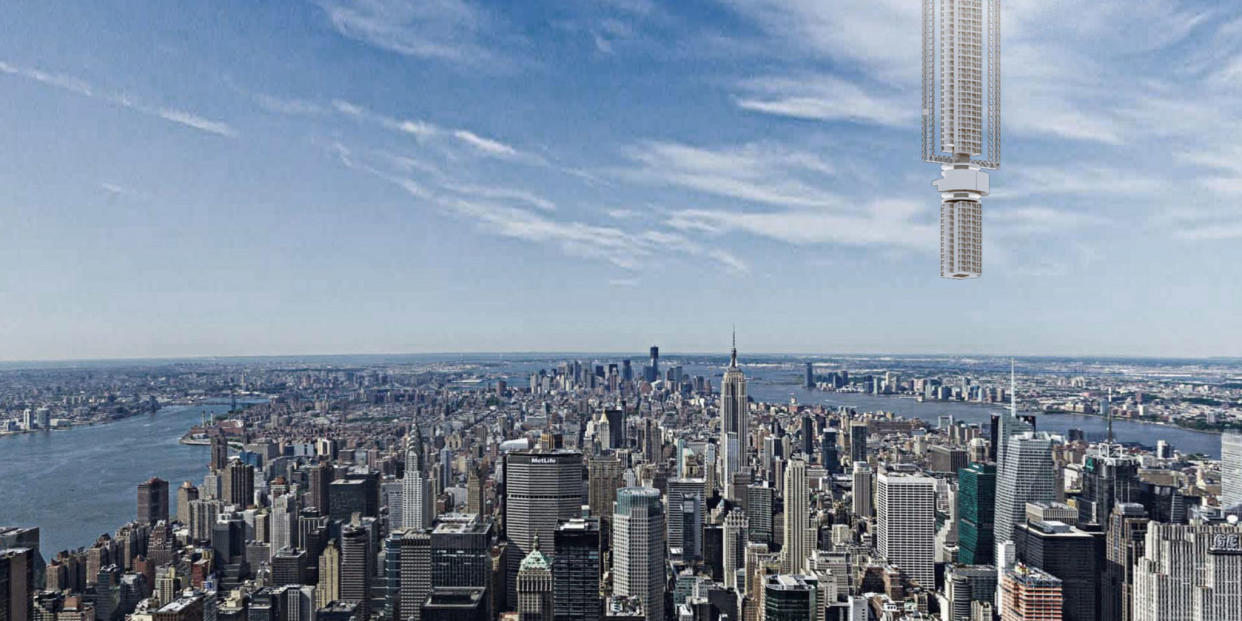Somebody Planned Out a Bonkers Skyscraper Built on an Asteroid

Supertall skyscrapers are popping up all over the world. This one is out of this world.
These preposterous artist impressions by the New York-based Clouds Architecture Office imagine Analemma Tower, the firm's I-beam-in-the-sky plan for a skyscraper that would be anchored not to the Earth but to a nearby asteroid pulled into our planet's orbit. Its gung-ho inhabitants, who live in a tower sticking down into the sky, would leap from their upside-down abode and parachute to our planet's surface at the moment their building passed over Midtown Manhattan. Hey, no one said the commute would be easy.

This is, of course, wackadoo. But it makes for a kooky set of illustrations and also an interesting thought experiment, as the component parts to make a space skyscraper are not in themselves impossible.
This is the decade that NASA decided it could retrieve an asteroid and billionaires decided they could mine one, so meddling with space rocks is in play. In the Clouds plan, prefabricated modules would be sent into space to add onto the growing structure, which makes sense. When engineers imagine building a huge structure in space, they often say we'd rocket the pieces to space and assemble it in microgravity rather than building something big on Earth and trying to shoot it into orbit all at once. Analemma Tower, then, is a crazy dream grounded in some fact, even if it's not grounded on Earth.

The most believable part of this whole thing is the idea that Clouds could find one-percenters willing to pay top dollar to live high above the rest of us. As the organization told Dezeen: "If the recent boom in residential towers proves that sales price per square foot rises with floor elevation, then Analemma Tower will command record prices, justifying its high cost of construction."
Source: Dezeen
You Might Also Like

